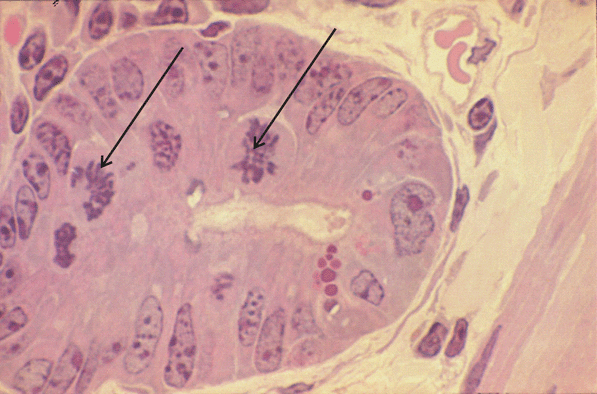AB2.H1.9 +D1 Cell Turnover
Cell Turnover:
- In all parts of the gut tube there is a rapid turnover of the epithelium lining the lumen
- The gut tube is a harsh environment where the epithelial cells lining the lumen are constantly being eroded and have to be replaced
- In the mouth, oesophagus and anal canal the epithelium is a stratified squamous non-keratinising epithelium
- This is the type of epithelium which is best able to resist abrasion
- In these areas, however, the food (or faeces) are well lubricated by mucus in order to minimise the erosion of the epithelial lining
- In the remainder of the gut tube, the functional processes of digestion and absorbtion would be compromised by the presence of a stratified epithelium which would increase the barrier across which nutrients had to pass to enter the bloodstream/lymphatics
- In these areas the simple columnar epithelium is partly protected by the mucus secreted by goblet cells and other glands
- However, there is still a very high level of erosion of the epithelium which has to be replaced by cell proliferation (and differentiation)
- Proliferation of the epithelium lining the gut tube occurs at a high level
- Indeed in a normal healthy individual it is estimated that the epithelium is completely replaced every 4-5 days
Cell Proliferation in the Small Intestine:
- This micrograph shows the base of an intestinal glane in the small intestine
- This is the region of the small intestine where proliferation of epithelial cells takes place, in order to replace those eroded away by the harsh environment of the small intestine
- Mitotic figures (arrowed) are abundant, indicating active cell division

